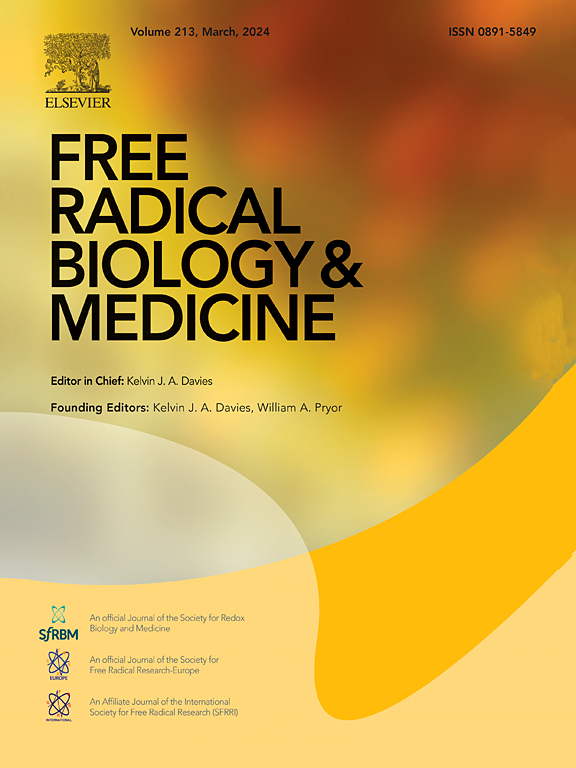Biallelic FDXR mutations induce ferroptosis in a rare mitochondrial disease with ataxia
IF 7.1
2区 生物学
Q1 BIOCHEMISTRY & MOLECULAR BIOLOGY
引用次数: 0
Abstract
Biallelic mutations in the FDXR are known to cause rare mitochondrial diseases. However, the underlying pathogenic mechanisms remain elusive. This study investigated a patient affected by optic atrophy, ataxia, and peripheral neuropathy resulting from compound heterozygous mutations in FDXR. Structural abnormalities in mitochondria were observed in muscle and nerve tissues. Lymphoblastic cell lines (LCLs) and muscle samples from the patient exhibited signs of mitochondrial dysfunction, iron overload, oxidative stress, and lipid peroxidation. Dysregulation of the glutathione peroxidase-4 was noted in the LCLs. Furthermore, treatment with deferoxamine, N-acetyl-cysteine, and ferrostatin-1 effectively alleviated oxidative stress and cell death. Cortical neurons demonstrate that FDXR deficiency impacts the morphogenesis of neurites. Collectively, these findings suggest that ferroptosis plays a significant role in the pathogenesis of FDXR-associated diseases. Additionally, idebenone appeared to have protective effects against various cellular injuries induced by FDXR mutations, providing novel insights and therapeutic approaches for the treatment of FDXR-associated diseases.

求助全文
约1分钟内获得全文
求助全文
来源期刊

Free Radical Biology and Medicine
医学-内分泌学与代谢
CiteScore
14.00
自引率
4.10%
发文量
850
审稿时长
22 days
期刊介绍:
Free Radical Biology and Medicine is a leading journal in the field of redox biology, which is the study of the role of reactive oxygen species (ROS) and other oxidizing agents in biological systems. The journal serves as a premier forum for publishing innovative and groundbreaking research that explores the redox biology of health and disease, covering a wide range of topics and disciplines. Free Radical Biology and Medicine also commissions Special Issues that highlight recent advances in both basic and clinical research, with a particular emphasis on the mechanisms underlying altered metabolism and redox signaling. These Special Issues aim to provide a focused platform for the latest research in the field, fostering collaboration and knowledge exchange among researchers and clinicians.
 求助内容:
求助内容: 应助结果提醒方式:
应助结果提醒方式:


